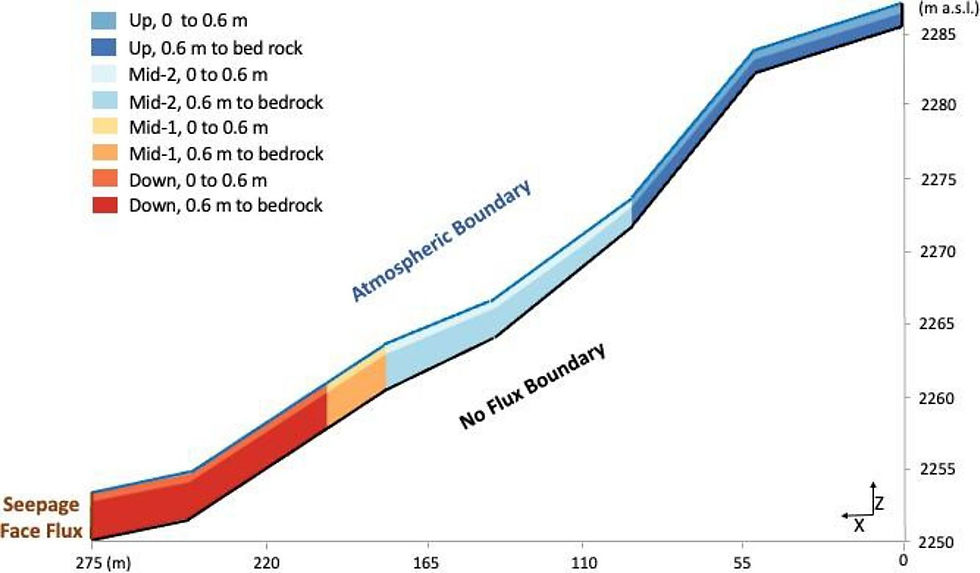Modeling restoration options for waterlogged slopes in the humid tropics
- sallythompson5
- Dec 4, 2024
- 2 min read
When I was a baby ecohydrologist, I was so excited by agroforestry and afforestation as to reduce deep soil water storage and dryland salinity risk in Western Australia. It was landscape-level engineering, using trees as our tools - it seemed like a powerful, new way to think about water and soil management.
Biodrainage, as this kind of intervention is now called, has most widely been used in water-limited places like Western Australia. But waterlogging is also a problem in humid climates like those of the Ethiopian highlands, where saturation of the soil profile during the rainy Kiremt season contributes to some of the highest rates of gully erosion anywhere in the world. Could strategic planting of well-adapted vegetation in or upgradient from high risk areas reduce this waterlogging occurrence and risk? Or would the wet conditions and low energy availability during the high risk times for waterlogging mean biodrainage cannot succeed?
Answering this question is not straightforward for the Ethiopian Highlands because the area is remote and under-studied, and has been sadly impacted by ongoing conflict. However, Liya Weldegebriel's hard work and collaborations with local researchers has enabled her to compile datasets that characterise soils, water table dynamics and climate in the area. We therefore decided to use a modeling appraoch to explore the potential for biodrainage. Liya developed synthetic hillslopes in Hydrus 2D like the one below, and checked that they produced water table dynamics that were comparable to those observed in real hillslopes in the highlands.

Then she tested whether fallow ground, maize or eucalyptus plantings - already widespread in the Highlands, as shown in the photos below - in upslope, midslope or the foot of the hillslope impacted water logging occurrence and duration.

She also explored which features of vegetation were most critical for reducing waterlogging.
She found that the vegetation mostly had local impacts on waterlogging, which were greatest in the midslopes and foot of the slope and greater for Eucalyptus than for maize.

Two parameters were particularly important in determining which kinds of vegetation were suitable for biodrainage - the sensitivity of plant activity to waterlogging, Popt, and the LAI.

Of these two factors, tolerance to waterlogging was by far the most sensitive parameter, and mostly responsible for the differences in eucalyptus and maize in controlling waterlogging.
While we studied maize and eucalyptus, the study emphasises that for the Ethiopian Highlands, a sustainable, polycultural agricultural system is desirable. There are multiple potential pathways to such a system including breeding existing crops to produce waterlogging tolerant varieties, introducing new waterlogging tolerant crops like as rice to the region and cautious deployment of agroforestry with eucalyptus or other economic species. This study suggests that biodrainage could provide significant the humid highlands of Ethiopia, but the design of such systems must navigate the trade-offs between agro-ecological, socio-economic and environmental impacts of a new, waterlogging-resilient agricultural system.




Comments